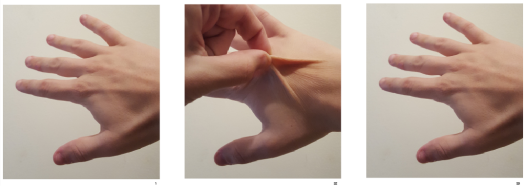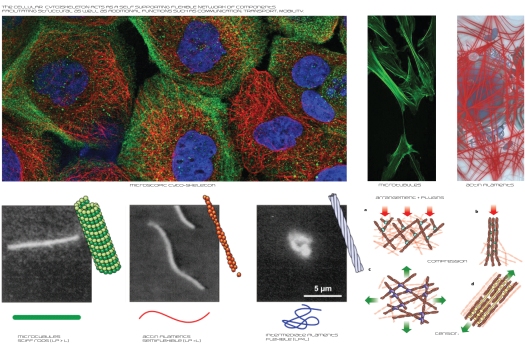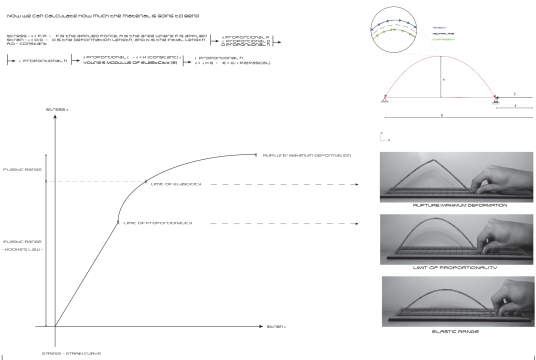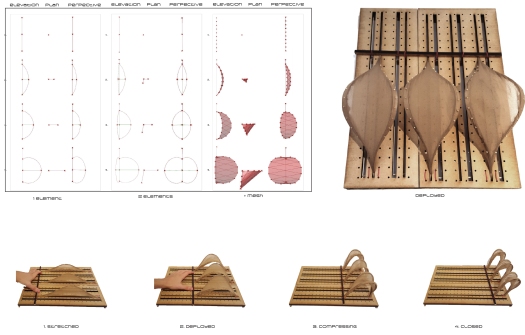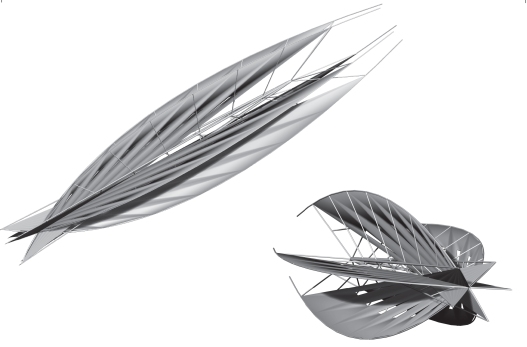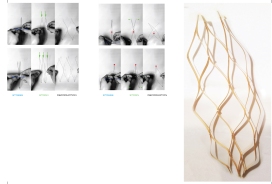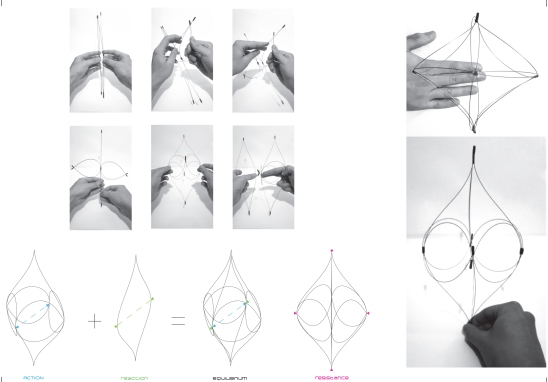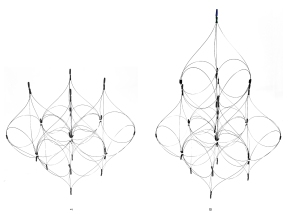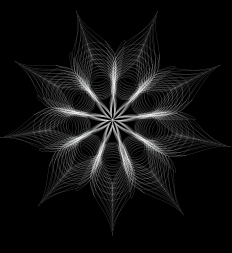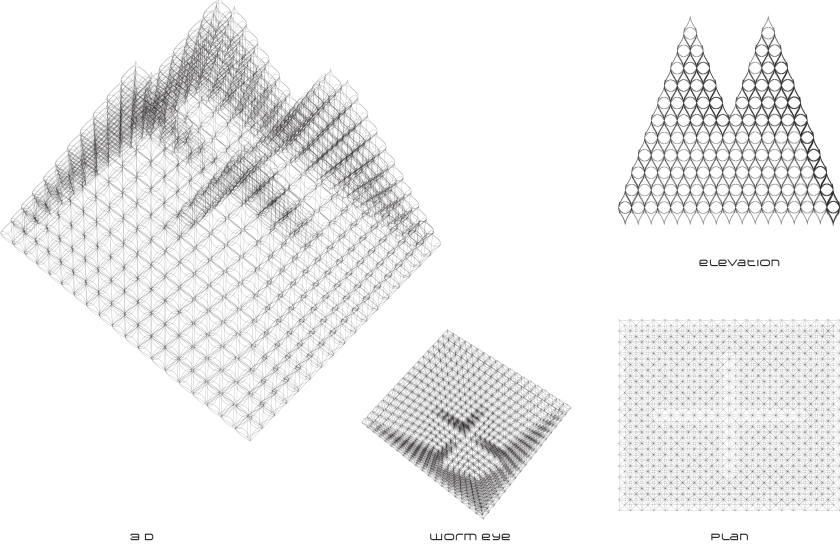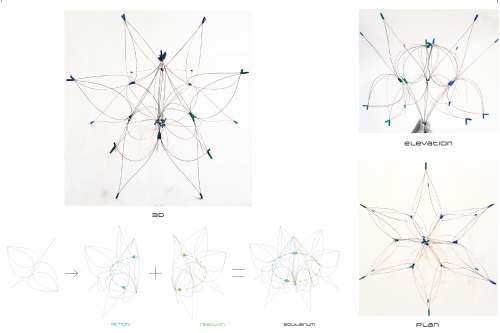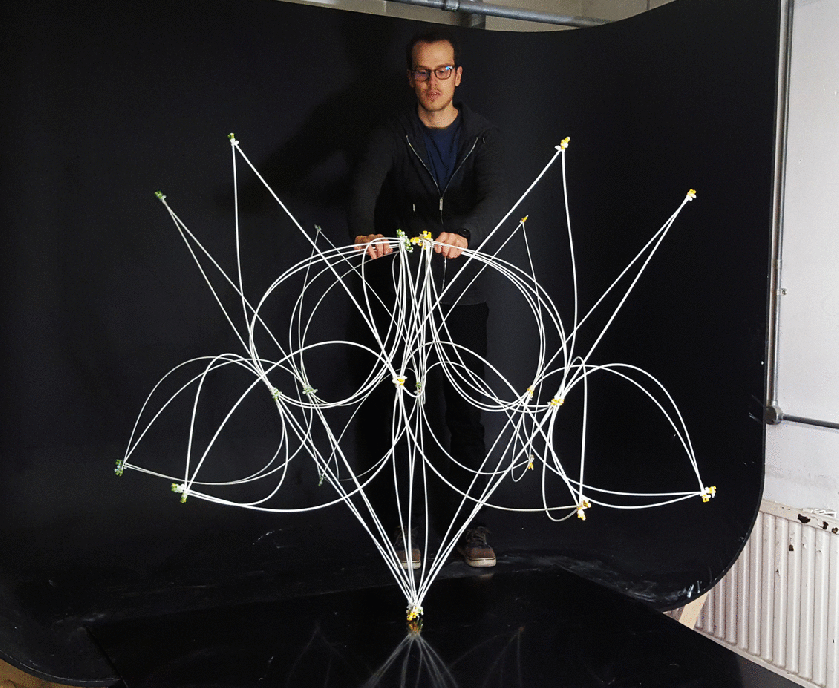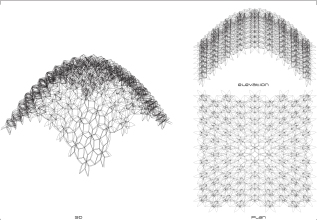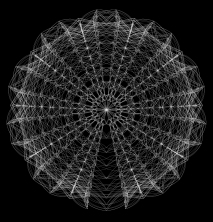In physics, elasticity (from Greek ἐλαστός “ductible”) is the ability of a body to resist a distorting influence or stress and to return to its original size and shape when the stress is removed.
This can be explained looking closer at the components which form the cytoskeleton – the cellular structure – formed of elastic and semi-elastic arrangements of proteins, which are adaptable to the cell’s requirements. Not only do they hold the structural integrity of the cell, but they also also perform functions of communication, transport combined with other “plug-in” proteins, whilst elastically responding to external forces or stimuli.
Elastic bending is used in both natural as well as man-made environments, expanding surfaces and volumes of various deployable structures.
The force responsible for elastic bending can be described in terms of the amount of deformation (strain) resulting from a given stress, a ratio known as Young’s Modulus. Hooke’s Law adds that the force responsible with restoring the initial shape of a bent material is proportional to the amount of stretch.
Using the formulas given by Young’s Modulus and Hooke’s Law, we can determine how much a certain material will bend when a force is applied to it.
Deploying structures using bending is a space and construction time saving method of producing structural elements which mimic the behaviour of natural systems.
After the structure is deployed, equilibrium of forces is required in order to keep the structure open and usable.
This can either be achieved by combining bending elements with meshes,
or by using the acting forces of bending elements against the reacting forces of other bending elements in both 2D and 3D.
Using these principles of acting forces vs. reacting forces, an elastic module in equilibrium is created, which can be stacked using its geometry to achieve various configurations.
Furthermore, using the same principles, a larger module is created containing groups of elements producing forces acting and reacting against each other, in order to achieve equilibrium.
However, due to the elastic properties of the newly formed module, the structure can bend and morph shape without losing integrity or equilibrium, in order to form various shapes, or respond to or external factors or users requirements, similarly to the cytoskeleton initially studied.
- Mihai Chiriac

